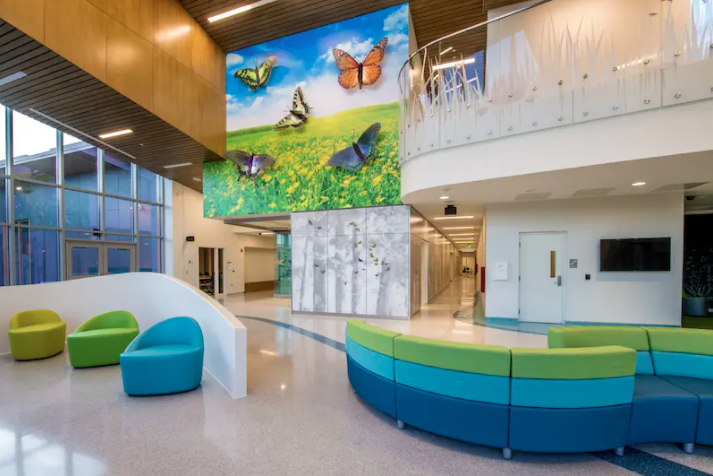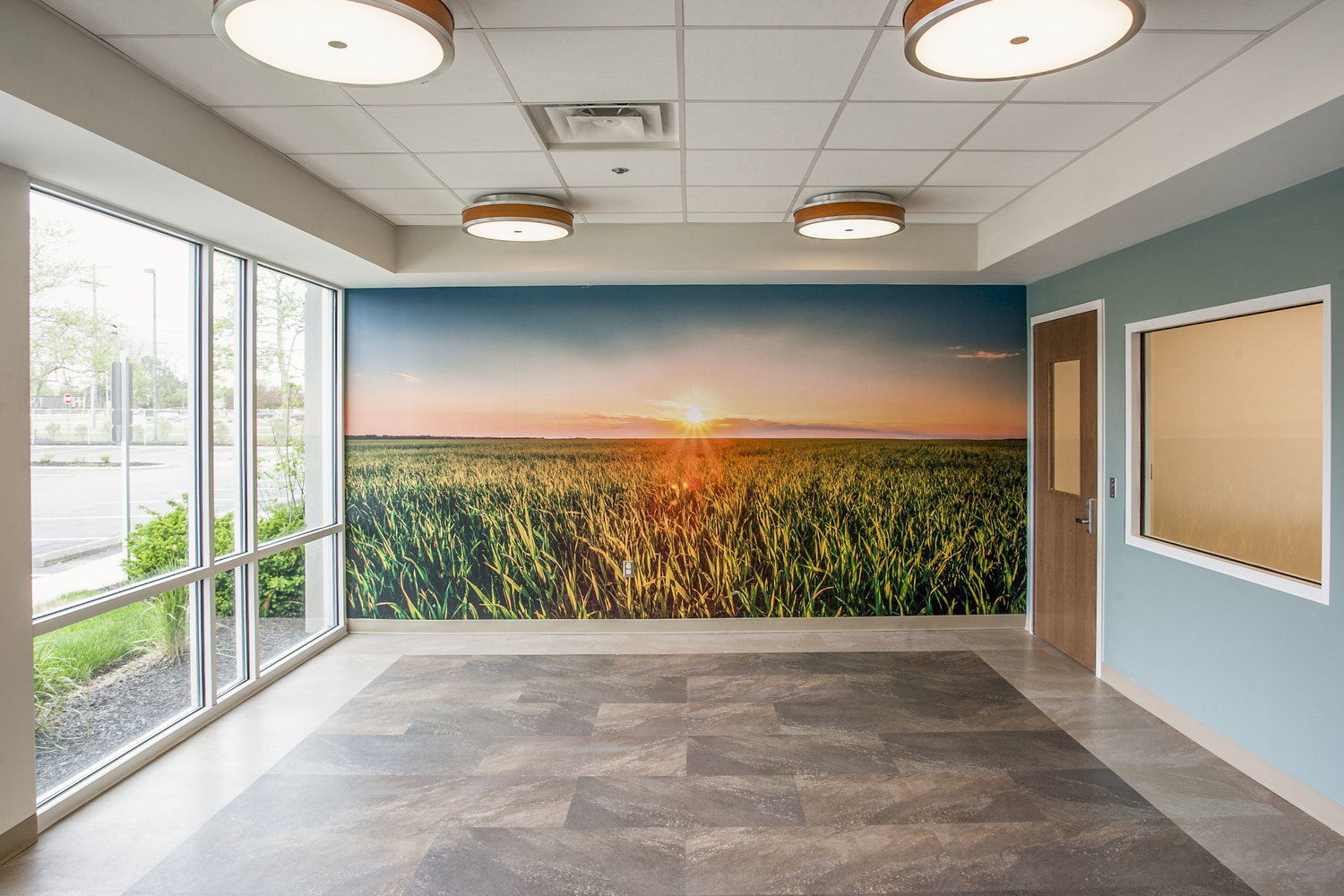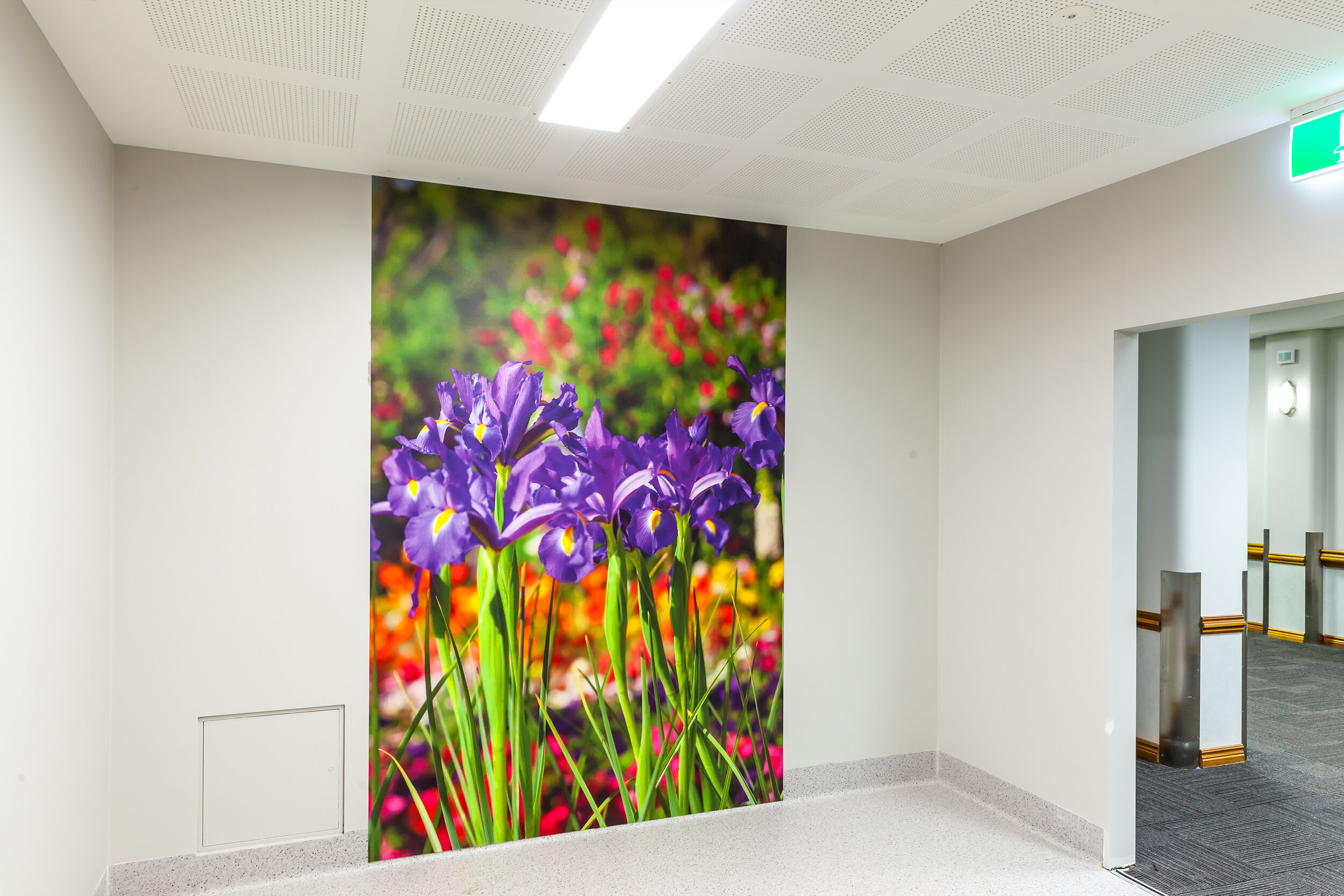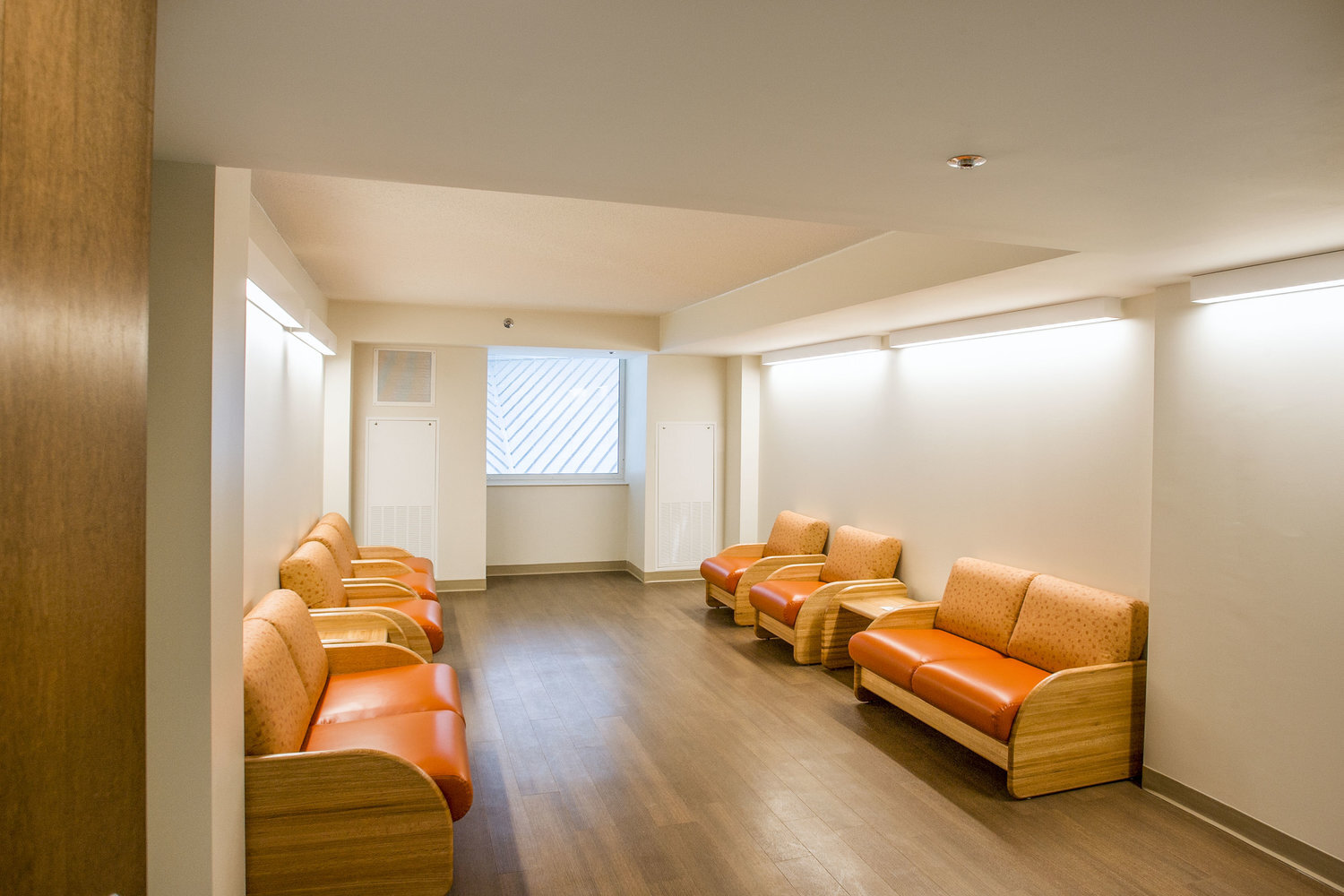ART IN HEALTH SETTINGS
There exists a compelling body of evidence that makes a case for the impact of positive distractions, such as art, on clinical and behavioral outcomes, including reduced stress, anxiety, and pain perception. Many of these studies have been conducted in acute care settings in high-stress areas, such as ICUs, waiting rooms, procedure rooms and Radiology Clinics.
In the context of mental health, researchers have long speculated that the physical environment in which treatment occurs has an impact on both the treatment process and its outcome. The effects of psycho environmental design have shown a decrease in pathological behaviour and attitude changes among both staff and patients, with a significant decrease in the rate of patient violence, an increase in patient-staff interaction, and improved morale among both patients and staff.
Art has a massive healing effect on patients, and the subject of the proposed art needs to be carefully considered. Natural neutral landscapes or peaceful settings tend to result in the most positive results.
At Pulse we study the Community for which we design and consider where our patients originate from. If the patient cohort originate from a rural or regional setting, we encourage hospitals to select wide open landscapes that the Community are familiar with.
In Mental Health or Behavioural Health settings, Pulse Architecture take extra care in subject selection.
We divert from crazy patterns and sharp contrasts that encourage aggressive mental stimulation in favour of graduating colour scapes in hues of blues and greens.
Art installation and framing also plays an important part in the selection process. Disturbed patients may deface or detach art for self-harm.
We have encouraged full mural art at the end of corridors if windows are not possible.
Theater Artwork at St Vincent’s Private Hospital in Toowoomba designed by Pulse Architecture.
Art selection involves making a variety of careful decisions. i.e., subject of art, style of artwork and how the art is framed and hung. The wrong subject matter can result in a patient escalating instead of being calmed.
Instead of addressing these issues, some Mental Health environments would have no artwork to avoid any of the above issues. This is not a good solution as it can then reinforce a tendency for those facilities to be stark and bare, which is not conducive to treatment and recovery.
PERFECT SOLUTION
IMPERFECT SOLUTION
Example of mural art at the end of corridor at St Vincent’s Private Hospital designed by Pulse Architecture.
Example of Behavioural Health Centre without artworks, designed by NK Architects.
Pulse Architecture create spaces that are non-threatening, welcoming, comforting, and familiar with Home.
Our designed environments encourage patients to relax and be calm, so they will be receptive to treatment provided by clinical staff.
FRAMED ARTWORKS
If whole wall art is not appropriate then Framed artworks can be used provided that they have:
· Compound radius corners and bevelled edges.
· Lexan Polycarbonate glazing which is essentially unbreakable.
· Flush-mount system installation method.
IMAGE SELECTION CRITERIA
Pulse have consolidated some points which need to be considered when it comes to selection the selection of images:
· The overall colour of the image needs to be considered. For example, colours such as Red which could trigger anger or violence must be avoided.
· Images of Empty parks or spaces must be avoided as these images could suggest loss, sadness, or loneliness.
· Images of Bridges, Cliffs and waterfalls should be avoided as these could be associated with suicide.
· Images with people should also be avoided, as these could reflect the loss of loved ones in patients.
· Images must not be dark, abstract, blurry, industrial or claustrophobia inducing images and yet it must be Bright & Uplifting, Sharp in focus, Nature Photography, Life size, wide and open.








